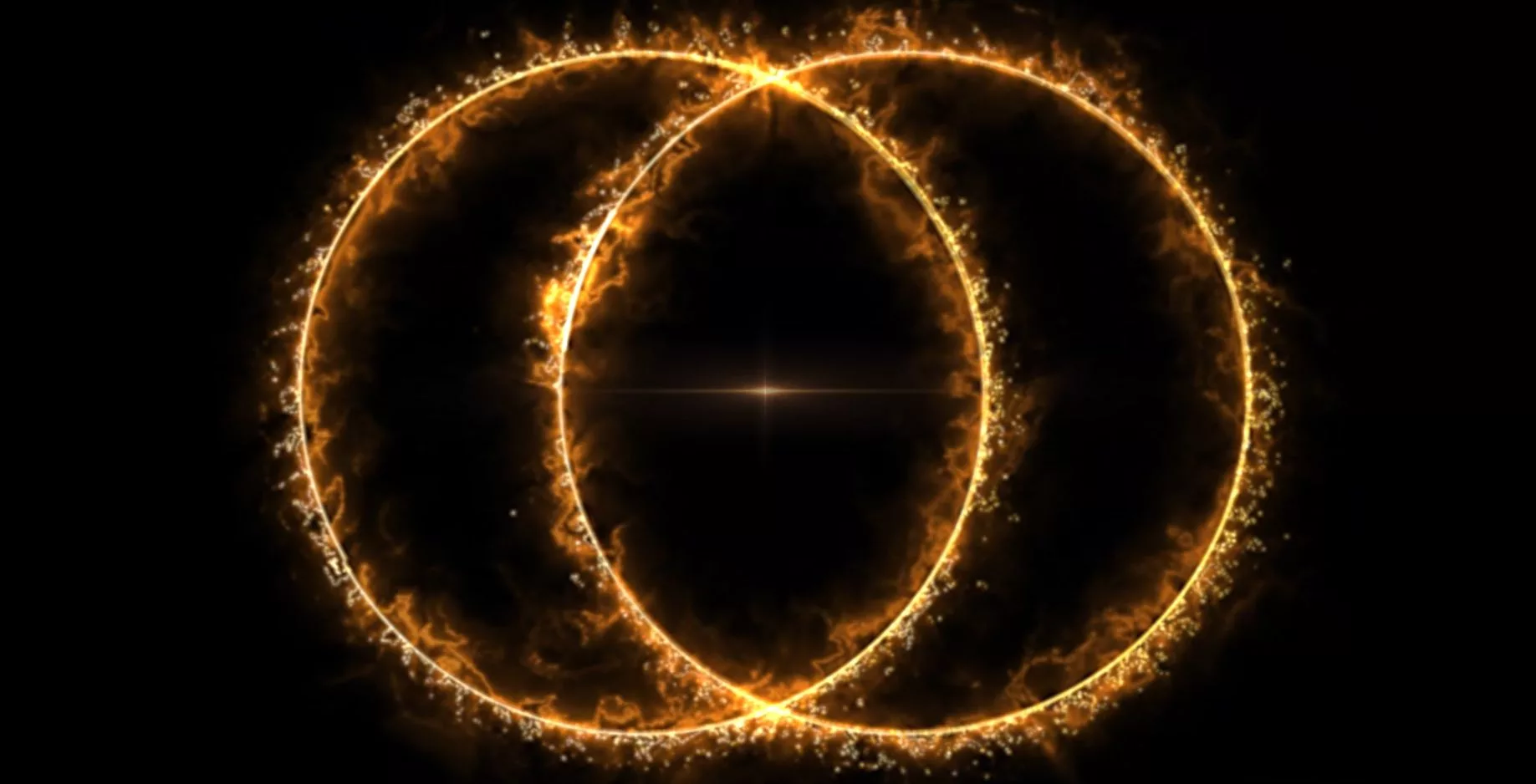In a cosmic twist worthy of science fiction, astronomers have spotted the most distant and powerful “odd radio circle” (ORC) ever recorded, a ghostly, double-ringed structure glowing in radio waves nearly halfway across the universe.
But this discovery wasn’t made by a supercomputer or a billion-dollar space probe. It was created by a team of professional astronomers and citizen scientists, who peered into the depths of space with the world’s most sensitive low-frequency radio telescope.
The source, named RAD J131346.9+500320, lies at a redshift of ~0.94, meaning the light we see from it began its journey when the universe was just half its current age. This makes it not only the most distant ORC ever found, but also the most powerful. And it’s no ordinary ring: it boasts two intersecting loops of radio emission, a feature seen only once before in the short history of ORC detection.
ORCs are a relatively recent addition to the astronomical lexicon. First spotted just six years ago, these faint, ring-shaped structures are visible only in the radio band of the electromagnetic spectrum. They’re enormous, often 10 to 20 times the size of our Milky Way, and composed of relativistic, magnetized plasma. Their origins remain mysterious, with theories ranging from shockwaves caused by merging supermassive black holes to galactic collisions.
A thick ring of cosmic dust and gas hiding a supermassive black hole
But the latest study, published October 2 in Monthly Notices of the Royal Astronomical Society, offers a fresh perspective. The researchers propose that these rings may be linked to superwind outflows from spiral host radio galaxies, powerful streams of charged particles driven by intense star formation or active galactic nuclei.
The discovery was made using LOFAR (Low-Frequency Array). This pan-European radio telescope stitches together data from hundreds of thousands of antennas across the Netherlands and other European countries. Operating between 10 and 240 megahertz, LOFAR offers an ultra-sensitive view of the low-frequency radio sky, allowing astronomers to peer billions of years into the past.
But the real twist? The ORC was spotted through the RAD@home Astronomy Collaboratory, a citizen science platform founded by Dr. Ananda Hota of the University of Mumbai. It’s the first ORC ever discovered through citizen science and the first identified using the LOFAR telescope.
“This work shows how professional astronomers and citizen scientists together can push the boundaries of scientific discovery,” said Dr. Hota. “ORCs are among the most bizarre and beautiful cosmic structures we’ve ever seen, and they may hold vital clues about how galaxies and black holes co-evolve, hand-in-hand.”
James Webb Telescope captures a stunning Einstein Ring
Alongside RAD J131346.9+500320, the RAD@home team uncovered two other cosmic giants that defy conventional expectations.
RAD J122622.6+640622 spans nearly three million light-years, over 25 times the size of our Milky Way. One of its powerful jets abruptly bends sideways, forming a spectacular radio ring roughly 100,000 light-years wide.
RAD J142004.0+621715 stretches across 1.4 million light-years and features a similar ring of radio emission at the end of one jet, with a narrow counter-jet on the opposite side.
Both galaxies reside in dense galaxy clusters, where their jets interact with million-degree thermal plasma, shaping these surreal radio structures. All three discoveries occurred in clusters weighing approximately 100 trillion Suns, suggesting that the interplay between relativistic jets and hot plasma may be crucial in forming these rare rings.
Discovery of ‘Alice rings’ offers a glimpse into an other-worldly realm
“These discoveries show that ORCs and radio rings are not isolated curiosities; they are part of a broader family of exotic plasma structures shaped by black hole jets, winds, and their environments,” said co-author Dr. Pratik Dabhade of the National Centre for Nuclear Research in Warsaw, Poland. “The fact that citizen scientists uncovered them highlights the continued importance of human pattern recognition, even in the age of machine learning.”
With next-generation facilities like the Square Kilometre Array (SKA) on the horizon, astronomers expect to uncover many more ORCs in the coming years. Meanwhile, optical surveys such as DESI and the Vera C. Rubin Observatory’s LSST will help map the redshifts and environments of their host galaxies, offering vital clues to how these enigmatic rings form and evolve.
For now, the three newly discovered cosmic rings, spotted not by algorithms but by keen-eyed citizen scientists, stand as a testament to the power of collaborative curiosity. They are not just beautiful anomalies in the sky, but potential keys to understanding the life cycles of galaxies, the behavior of black holes, and the invisible forces that sculpt the universe.
Journal Reference:
Ananda Hota, Pratik Dabhade, Prasun Machado, Joydeep Das, Aarti Muley, Arundhati Purohit. RAD@home discovery of extragalactic radio rings and odd radio circles: clues to their origins. Monthly Notices of the Royal Astronomical Society, 2025; 543 (2): 1048 DOI: 10.1093/mnras/staf1531

